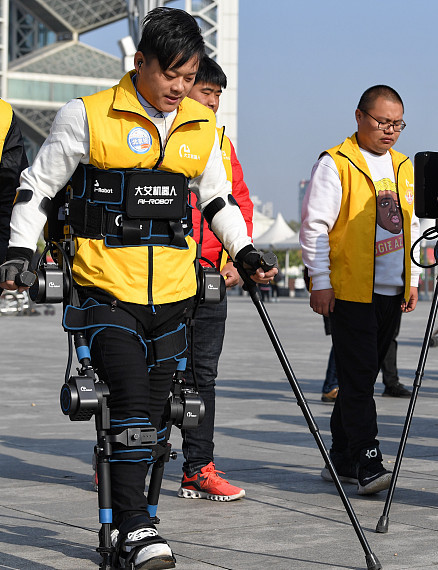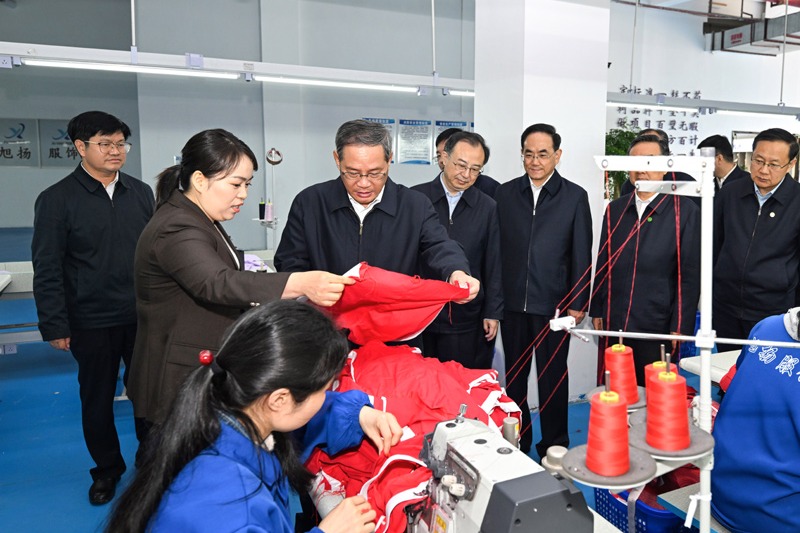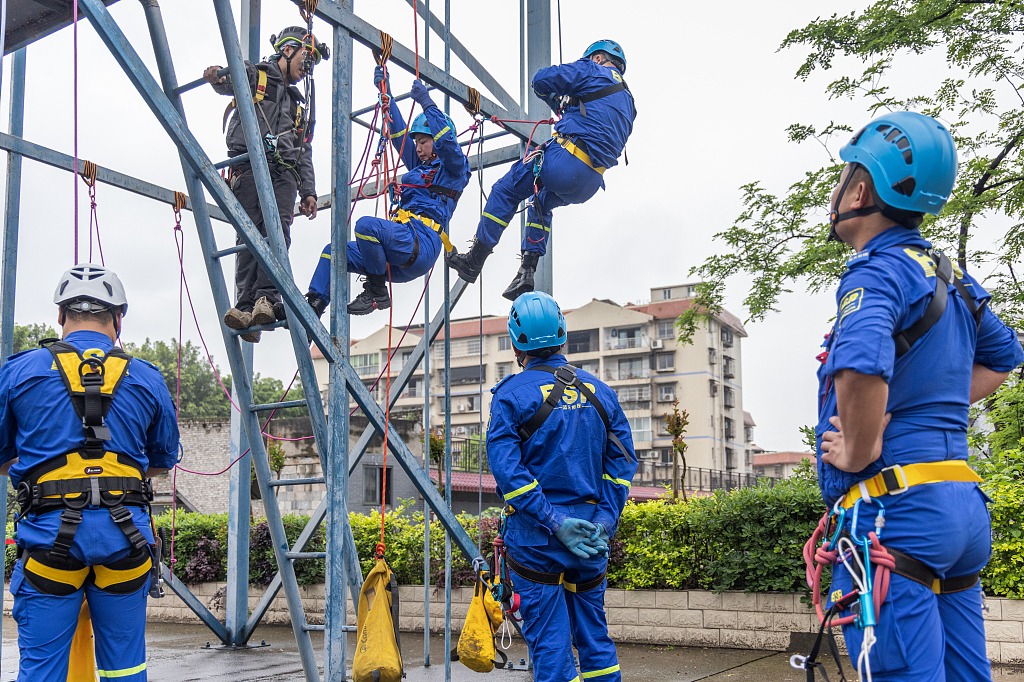'Iron men' walk in high-tech skeletons


Two physically challenged men in wearable exoskeleton robotic equipment walked through some of China's most famous sites on a nine-day journey to Beijing from the Xinjiang Uygur autonomous region.
One of the men covered 42.22 kilometers, slightly more than a full marathon, while the other managed 21.63 km.
The men, Shao Haipeng and Li Tao, walked intermittently and visited key spots, including the ancient city of Kashgar, the Terracotta Warriors in Xi'an and Beijing's Temple of Heaven. For example, they walked 6 km in Kashgar on Nov 17 before flying to Xi'an.
Shao, 28, injured his spine in an accidental fall last year and cannot stand or walk unaided. Li, 40, was diagnosed with myelitis - an inflammation of the spinal cord - and has been paralyzed from the waist down since 2016.
The two men began their journey in Xinjiang's Kizilsu Kirgiz autonomous prefecture on Nov 15. The pair were observed the whole way by notaries, whose job was to officially certify the distance walked.
"Some people called us 'iron men' when they saw us in the wearable robotic equipment," Shao said. "People in Xinjiang are very passionate and friendly. Strangers we met often cheered us up.
"In Kashgar, children picked wild flowers on the roadside and showed us the way. They were like angels. They made me extremely happy."
Li said that while it is difficult for him to take even a small step, he had the confidence to complete the journey and realize his dream.
"We walked to encourage more people with disabilities like ours," he said. "We hope they will pull together and return to society."
The wearable devices, designed by Beihang University, Jiangsu Province Hospital and a rehabilitation robotics company in Beijing, are the first exoskeleton robotic devices to be certified by the National Medical Products Administration.
Hospitals using the equipment first measure a patient's body and adjust the exoskeletons accordingly. Then they fasten the equipment tight to the waist, legs and arms. The process takes about three minutes.
The speed and length of the patient's stride are entered into computers that are later fastened to the patient's back. A disabled person can depend on the robotics to lead their movements, but canes are also needed to maintain balance.
Each set of equipment costs 300,000 yuan ($43,200).
A number of patients in Xinjiang have benefited from the equipment. Jelil Mamat, 39, had myelitis and was paralyzed for five years.
On Wednesday, he noticed that two other patients in Kizilsu Kirgiz People's Hospital were exercising with strange-looking exoskeletons. After consulting doctors, he asked to try the equipment the next day.
On Thursday, with the help of an exoskeleton, the former carpenter stood up for the first time in five years. His tearful wife and son hugged him and took pictures.
Ding Qiang, head of a medical team sent by Jiangsu province to assist in Xinjiang, said two sets of equipment will be donated to Kizilsu Kirgiz People's Hospital to help local patients recover their mobility.
- Beijing court sees rise in disputes involving digital economy
- Wenchang hosts Space Day celebration with meteorology integration
- Posters: Health literacy rate up in 2023
- Fish farming on dry land nets multiple catches
- Mainland to expand use of travel permits for Taiwan residents
- Strict regulations create conditions for finless porpoises to find way back home





































